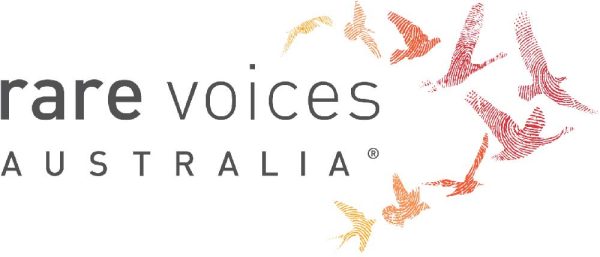May-Thurner syndrome
Quick Search
- Summary
- Synonyms and Classifications
- Symptoms
- Disability Impacts
- Cause and Inheritance
- Diagnosis
- Treatment
- Clinical Care Team
- Clinical Care Guidelines
- Emergency Management
- Research
- Rare Disease Organisation(s)
- Lived Experience
- Support Services and Resources
- Mental Health
- Other Information
- Useful Links for Healthcare Professionals
Summary
May-Thurner syndrome is a blood vessel condition which affects blood flow in the veins of the lower body.1 May-Thurner syndrome usually happens when the body’s right common iliac artery (which supplies blood to the right lower body) compresses the overlying left common iliac vein (which returns blood from the left lower body to the heart) against the spine.2,3 This can block blood flow in the left leg, leading to blood clots and other symptoms such as swelling and pain in the leg. May-Thurner syndrome is more common in women than men.1
Synonyms and Classifications
Synonyms: MTS, Cockett syndrome, iliac vein compression syndrome.4
Universal rare disease classifications provide a common language for recording, reporting and monitoring diseases. Please visit the Rare Disease Classifications page for more information about these internationally recognised classifications.
Symptoms
The symptoms and severity of May-Thurner syndrome varies between individuals.3
Many people with May-Thurner syndrome have no symptoms.3
In some people, the narrowing of the left common iliac vein can lead to symptoms in the left leg or pelvis such as swelling, heaviness, pain, varicose (enlarged) veins, ulcers and skin colour changes.1 These symptoms may come and go, or worsen especially after prolonged standing or sitting.
As the vein progressively narrows or becomes blocked, this can result in blood clots in the vein (known as deep vein thrombosis) commonly in the left leg.1,3 Deep vein thrombosis can lead to other complications, including:3,5
- Pulmonary embolism – when the blood clot travels from the leg to the lungs. This can block arteries in the lungs, leading to lack of blood and oxygen in the lungs, which can be life-threatening.
- Post-thrombotic syndrome – that develops in some people after an episode of deep vein thrombosis, characterised by chronic pain, swelling and ulcers in the affected leg.
More information about deep vein thrombosis can be found at HealthDirect: Deep vein thrombosis and Better Health Channel: Deep vein thrombosis.
In some people, they may develop symptoms following certain circumstances such as after surgery, pregnancy, oral contraceptive pills, dehydration, cancer and infection.1,3
Please speak to your medical team to learn more about the signs and symptoms of May-Thurner syndrome.
Disability Impacts
Rare diseases are often serious and progressive, exhibiting a high degree of symptom complexity, leading to significant disability. Majority of the estimated two million Australians living with a rare disease meet the Australian Government’s definition for disability (in accordance to the Australian Public Service Commission and Australian Bureau of Statistics), and many experience severe and permanent disability impacts. If you or someone you care for is experiencing disability-related impacts from a rare condition, please speak with a health or disability professional for advice. Information about relevant disability support can be found at the RARE Portal’s Disability Support Information page.
Cause and Inheritance
May-Thurner syndrome is caused by compression of a common iliac vein against the spine by a common iliac artery.1 In most cases, the right common iliac artery (which supplies blood to the right lower body) compresses the overlying left common iliac vein (which returns blood from the left lower body to the heart) against the spine. This can block blood flow, causes vein damage and blood clots in the left leg.3
Right-sided May-Thurner syndrome is less common, and is caused by the left common iliac artery compresses against the right common iliac vein, affecting the right leg.1
Diagnosis
Diagnosis of May-Thurner syndrome may be made based on:1,3
- physical examination
- imaging tests to look for compression of the veins or blood clots. This may include ultrasound, computed tomography (CT) venography, or magnetic resonance imaging (MRI).
As part of the diagnostic process, doctors may do a differential diagnosis, where they rule out other conditions that have similar symptoms, such as underlying cancer, lymphadenopathy (condition affecting the lymph nodes), hematoma (blood clots that form a solid swelling), cellulitis, uterine fibroids, aortoiliac aneurysm (weakening and enlargement of aorta and the common iliac arteries), retroperitoneal fibrosis (scar tissues formation at the back of the abdominal cavity), and osteophytes (bone spurs).3
Please speak to your medical team to learn more about the available diagnostic pathways for May-Thurner syndrome.
Treatment
Treatment for May-Thurner syndrome is targeted at managing symptoms, removing blood clots and restoring blood flow.1 This may include:1,4
- catheter-directed thrombolysis to dissolve blood clots. A tube/catheter is inserted into the vein to deliver thrombolytic medication that will dissolve blood clots.
- venous stenting to open narrowed or blocked vein by inserting a metal tube (stent) into the vein
- blood thinner medications such as anticoagulants to prevent formation of blood clots
- compression socks or stockings to reduce swelling
Please speak to your medical team to learn more about the possible treatment or management options for your condition. Treatment will depend on an individual’s specific condition and symptoms. It is also important to stay connected to your medical team so that you can be made aware of any upcoming clinical trial opportunities.
Clinical Care Team
Clinical care for rare diseases often involves a multidisciplinary team of medical, care and support professionals. Please note that the information provided here is as a guide and that RVA does not necessarily monitor or endorse specific clinics or health experts.
Healthcare professionals involved in the care of individuals with May-Thurner syndrome may include general practitioners (GP), vascular specialists, haematologists, radiologists and others. The need for different healthcare professionals may change over a person’s lifetime and extend beyond those listed here.
Clinical Care Guidelines
We are not aware of any clinical care guidelines for May-Thurner syndrome in Australia or internationally. If you know of any relevant care guidelines, please let us know via the Contribute page.
The following guidance is around the management of common symptoms of May-Thurner syndrome:
Australian Commission on Safety and Quality in Health Care: Venous Thromboembolism Prevention Clinical Care Standard published in 2020.
Emergency Management
Individuals living with rare diseases may have complex medical issues and disabilities, which are not always visible. It is often useful to refer to their medical history as well as personal information such as a medical card, doctor’s letter, or if available, a rare disease passport, for relevant information.
Research
There are specific considerations around participating in rare disease research, including clinical trials. It is important to be mindful of issues such as data privacy, research ethics, consent and differences in research regulations between Australia and other countries.
If you are interested in finding clinical trials for your condition, please visit the following websites; however, there may not be any clinical trials available:
It is best to discuss your interest in any clinical trials with your medical team to determine suitability and eligibility.
Please note that RVA does not necessarily monitor or endorse each group/organisation’s operational governance and activities.
Rare Disease Organisation(s)
We are not aware of any rare disease organisations for May-Thurner syndrome in Australia. If you are aware of any relevant Australian organisations, please let us know via the Contribute page.
International Organisation:
National Blood Clot Alliance (United States of America)
Website: https://www.stoptheclot.org/
Please note that RVA does not monitor or endorse each group/organisation’s operational governance and activities. When engaging with a group, please consider the information on the RARE Portal’s Finding Helpful Peer and Community Supports page.
Lived Experience
May-Thurner syndrome varies between individuals, and each person’s experience is unique.
National Blood Clot Alliance: Patient Stories of May-Thuner Syndrome have personal stories of people living with May-Thurner syndrome.
If you would like to share your personal story with RVA, please visit the Rare Voices Australia: Share Your Story page. RVA will consider your story for publishing on our website and inclusion on the RARE Portal.
Support Services and Resources
For information on available government and social services that provide support for individuals with a rare disease, please visit the National and State Services pages.
Mental Health
People living with a rare disease, including families and carers, often face unique challenges such as diagnostic delays, misdiagnoses, limited treatment options, and limited access to rare disease specialists and support. These challenges may impact people’s emotional wellbeing and quality of life. Many people find it helpful to seek mental health and wellbeing support to cope with ongoing stress and uncertainty. Connecting with people who have shared experiences through a support group may also be helpful. Information about relevant mental health and wellbeing support can be found at:
- Mental Health and Wellbeing Support for Australians Living with a Rare Disease
- The National and State Services pages underneath the ‘Mental Health’ sections listed
Other Information
Further information on May-Thurner syndrome can be found at:
National Blood Clot Alliance: May-Thurner syndrome resources
Useful Links for Healthcare Professionals
References
- Liddelll RP, Evans NS. May-Thurner syndrome. Vascular Medicine. 2018;23(5):493-496. https://doi.org/10.1177/1358863X18794276
- U.S. National Institutes of Health. National Cancer Institute. Common iliac artery. Accessed 15 October 2025. https://www.cancer.gov/publications/dictionaries/cancer-terms/def/common-iliac-artery
- Mangla A, Hamad H. May-Thurner Syndrome. Updated 11 March 2024. In: StatPearls [Internet]. Treasure Island (FL): StatPearls Publishing; 2025 Jan-. Accessed 15 October 2025. https://www.ncbi.nlm.nih.gov/books/NBK554377/
- Orphanet. May-Thurner syndrome. Accessed 15 October 2025. https://www.orpha.net/en/disease/detail/675404
- Victoria State Government Department of Health. Better Health Channel. Deep vein thrombosis. Updated 6 Jan 2023. Accessed 15 October 2025. https://www.betterhealth.vic.gov.au/health/conditionsandtreatments/deep-vein-thrombosis
Contributors
This page has been developed by Rare Voices Australia (RVA)’s RARE Portal team.
If you are aware of any additional information that may benefit stakeholders with an interest in this page, or if you notice any broken links or inaccurate information, please let us know via the Contribute page.

